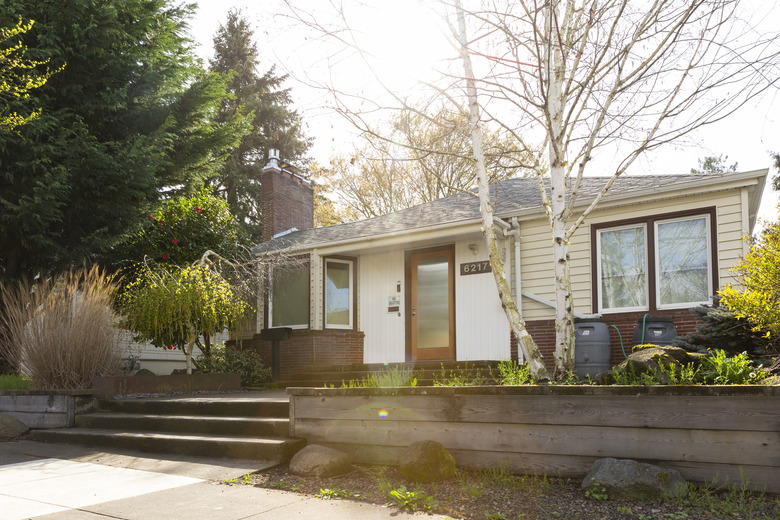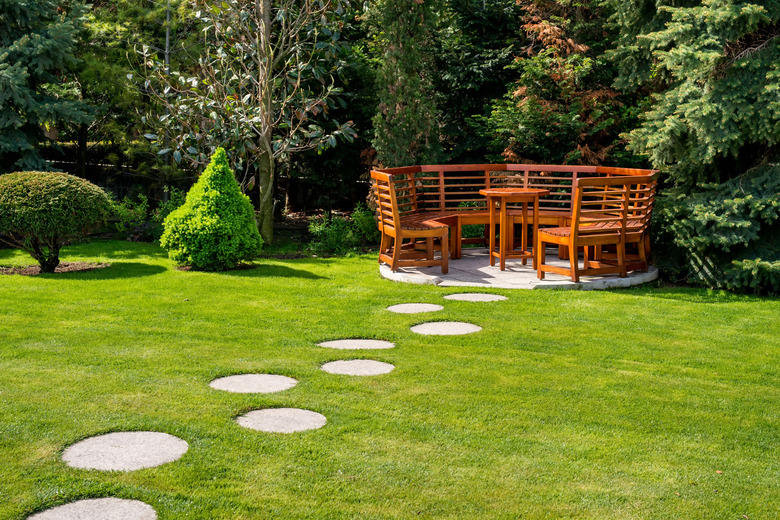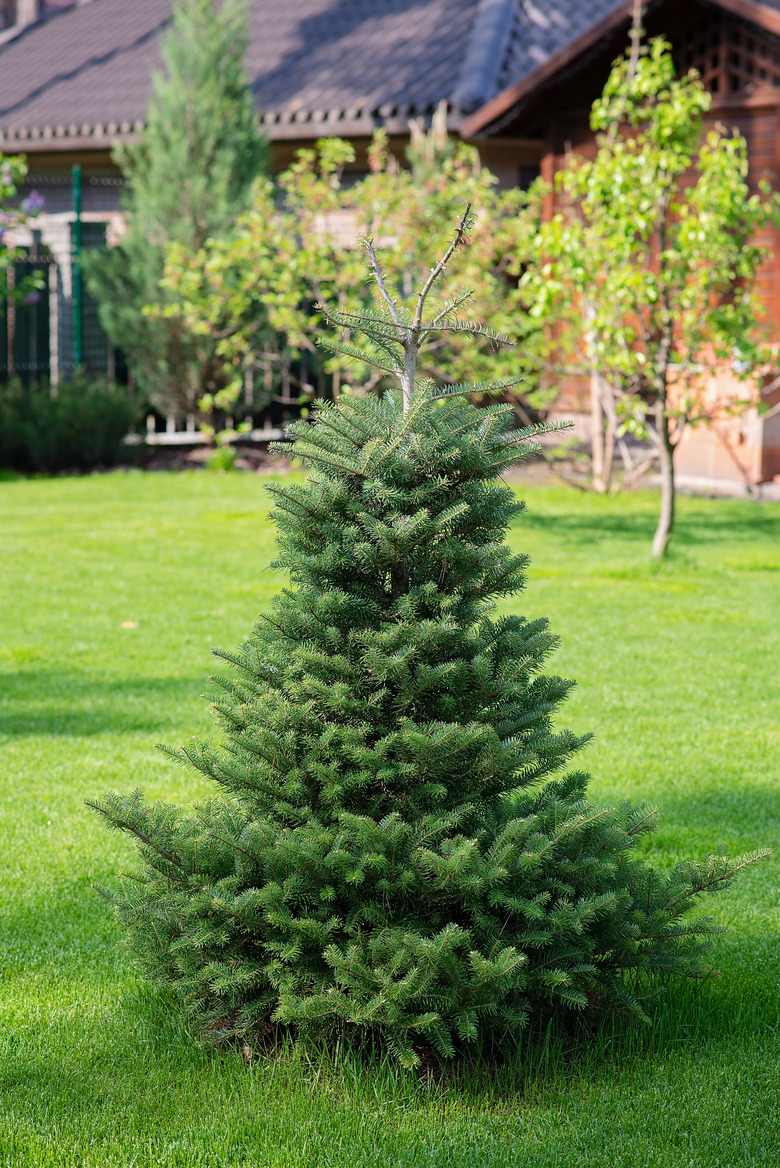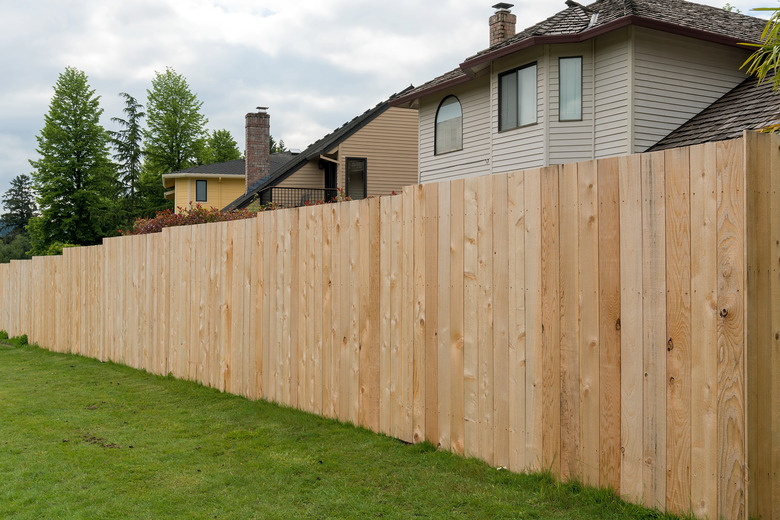11 Most Popular Evergreen Trees For Your Landscape
Evergreen trees are a great addition to any landscape for a number of reasons, but one of the main ones, at least in northern climates, is to bring year-round color and life when other trees and plants go dormant. A bushy conifer powdered with snow is a reassuring reminder that the death grip of winter's freezing temperatures is not as all-pervading as it appears and that life continues to flourish even in extreme conditions. That's undoubtedly one of the reasons people traditionally dress up pine, fir or blue-green spruce trees in colorful lights to create Christmas trees.
Once established, evergreen trees don't require much care. Many are drought tolerant, and unlike deciduous trees that litter the lawn with fallen leaves just before the winter chill sets in, they don't make a mess. They offer just as many benefits in the summer as they do in the winter, providing shade, windbreaks and habitats for birds and small animals. In short, they enliven your landscape year-round.
What Are Evergreen Trees?
What Are Evergreen Trees?
Evergreen trees keep their foliage and coloration throughout the year. Most conifers — but not all — are evergreen trees, but evergreens are not necessarily coniferous (trees with needle-shaped leaves) because a number of deciduous species from frost-free climates, such as eucalyptus (Eucalyptus spp.) and bay laurel (Laurus nobilis, USDA zones 8-10), as well as many deciduous rainforest species, keep their foliage year-round. These aren't the type of evergreens that typically adorn landscapes in North America, although they do grow in the limited number of climates that support them.
Most evergreen trees suited to North American climates have needles instead of leaves, and they typically grow in a conical shape. Some, like the coastal redwood (Sequoia sempervirens, USDA zones 7-9) and Douglas fir (Pseudotsuga menziesii, USDA zones 4-6), can get very tall. Treehugger identifies the Doerner Fir tree in Oregon, which is a Douglas fir, and California's Hyperion Sequoia, a coastal redwood tree, which are both just shy of 400 feet in height, as the tallest trees in the world. Most North American conifers are not as ambitious, though, and rarely grow taller than 100 feet. Rather than dominating the landscape, they fill it out with their dense foliage.
Uses and Benefits of Evergreens
Uses and Benefits of Evergreens
One or several well-placed conifers can help add definition to any landscape and offer year-round color and visual stimulation, but that's far from the only reason to add them to your landscape design. Evergreens have as many practical benefits as they do visual ones and offer, among other things:
- Wind protection: They protect your house from the cold winter wind, which robs heat from exposed siding and drives up your energy bill.
- Shade: In the summer, evergreens provide an oasis for shade-loving ground cover and foundation plantings, and they help keep your house cooler, which lowers your air conditioning costs and saves energy.
- Privacy: A row of evergreens on the property line forms a living visual barrier that protects you from prying eyes.
- Improved air quality: Evergreens pull carbon dioxide from the air and replace it with oxygen, and as Dammann's Garden Company points out, they do this even in the winter when air pollution is often at its worst.
Another way evergreens bring life to your landscape is by providing a habitat for wildlife. Squirrels nest in the tops of evergreen trees, and nonmigrating birds build nests in the branches. Providing homes for birds with dramatic plumage, such as cardinals and blue jays, is another way evergreens bring color to your landscape.
Popular North American Evergreen Trees
Popular North American Evergreen Trees
Most people are familiar with evergreens such as pine (Pinus spp.), fir (Abies spp.), and spruce (Picea spp.), which include a large number of subspecies that dot landscapes throughout most of the United States. Other well-known conifers include cedar (Cedrus spp.), cypress (Cupressus spp.), and hemlock (Tsuga spp.). Few approach 100 feet in height, according to Great Plant Picks, much less than the lofty heights of the redwoods and Douglas firs that grow only on the Pacific coast, so they can serve both ornamental and practical purposes. Whether you're looking to plant for privacy or to liven up your landscaping in the barren winter months, you can't go wrong with one of these 11 popular evergreen trees.
References
1. Green Giant Arborvitae
Arborvitae (Thuja spp.) is a group of densely foliated and tall evergreen trees often used for privacy screens and shade. Their popularity is due to the fact that they don't require much care, they thrive in most types of soil in United States Department of Agriculture (USDA) hardiness zones 3 to 11, depending on species and cultivar, which includes the entire continental U.S., and they grow quickly — the Green Giant arborvitae (Thuja 'Green Giant,' USDA zones 5-8) grows as much as 3 feet a year until it reaches a height of 35 to 40 feet with a base that is 15 feet in diameter. Arborvitae is popular to the point of being overused, says Gardening Know How, which is a drawback for some who find them boring, but if you're looking for instant privacy and wind protection, they are for you.
2. Leyland Cypress for Instant Privacy
A hybrid variety that grows to a height of 70 feet with a 20-foot base diameter, the Leyland cypress (x Hesperotropsis leylandii, formerly x Cupressocyparis leylandii) has a bluish-green coloration and luxuriously soft foliage. It's drought tolerant and grows in most soil types in zones 6 to 10, preferring at least six hours of sunlight a day. Its foliage is dense, and when trees are planted 8 feet apart, they create an almost impenetrable privacy screen. Of all the cypress trees, it's one of the fastest growing, and FastGrowingTrees.com calls the Leyland cypress the most popular privacy tree in America. Unfortunately, Leyland cypress trees are vulnerable to many diseases that can spread from tree to tree once it takes hold on a single specimen.
3. Picturesque Norway Spruce
Hardy in zones 3 through 7, the Norway spruce (Picea abies) is a large tree that reaches a height of 40 to 60 feet and a diameter of 25 to 30 feet at maturity. It needs full sun, plenty of water and well-draining soil and is primarily used as a windbreak on large properties. The branches produce small, reddish-pink flowers that turn into cylindrical cones that are 4 to 6 inches long.
This is not a tree for small yards, but there are several smaller cultivars, including the bird's nest Norway spruce (Picea abies 'Nidiformis'), a dwarf variety that grows only 3 to 6 feet high, and the columnar Cupressina Norway spruce (Picea abies 'Cupressina'), which grows to 30 feet in height with a base that is only 6 feet wide.
4. Japanese Yew for Rock Gardens
Not quite as deadly as its English cousin, the Japanese yew (Taxus cuspidata, USDA zones 4-7) is still poisonous, but it's also a favorite because of its dark-green foliage and bright-red berries. When not pruned into hedges or foundation plants, Japanese yew grows into a small tree with a height of 25 to 40 feet and a base diameter around 8 feet. Native to Japan and Korea, the Japanese yew prefers well-draining soil. It can grow in full sun, partial sun and shade, but it needs protection from the wind. It's a favorite adornment for rock gardens.
5. Eastern White Pine
A large, showy, ornamental tree that grows to a height of 80 feet and a width of 40 feet, the eastern white pine (Pinus strobus, USDA zones 3-8) can also be pruned into a hedge. Native to southeastern Canada and the eastern U.S., it will grow as far south as the Gulf of Mexico. It prefers fertile, well-draining soil and full sun and won't do well in clayey soil, and the Missouri Botanical Garden advises that it doesn't tolerate heavily polluted air filled with carbon dioxide and ozone.
6. Low-Maintenance Eastern Redcedar
If you're looking for a conifer that is particularly easy to grow, look no further than the eastern redcedar (Juniperus virginiana, USDA zones 2-9), which isn't really a cedar at all but a species of juniper. Ubiquitous in pastures and open fields in eastern North America, it is resistant to wind and extreme temperatures and can thrive in rocky, swampy and nutrient-deficient soil. It reaches a height of 40 to 50 feet and a width up to 20 feet. Its primary use is to provide a habitat for wildlife that feed on its tart blue fruits, such as the cedar waxwing, which is named for this tree.
7. Colorado Blue Spruce
Owing to its silvery-blue needles, another common name for the Colorado spruce (Picea pungens, USDA zones 2-7) is the blue spruce. This large tree can reach a height of 100 feet in its natural Rocky Mountain habitat, but in cultivation, it typically grows to a height of 60 feet and a spread of 20 feet. Not particularly drought tolerant, the Colorado blue spruce prefers full sun and moist soil. It's primarily an ornamental tree that looks particularly striking under a generous cover of new snow.
8. The Hardy White Spruce
Another ornamental variety, the white spruce (Picea glauca, USDA zones 2-6) is native to Canada and the northern United States. It likes full sun and moist, well-draining soil, and because it thrives in harsh winters, it's a particularly good choice for northern climates. It grows to a height of 60 feet and a spread of 20 feet, but it can occasionally reach heights up to 140 feet. It has aromatic bluish needles that develop a waxy coating with age, and because it is so bushy and hardy, it can function as a windbreak or privacy screen.
9. Common Boxwood for Garden Walls
Native to Europe, Asia and Africa, the common boxwood (Buxus sempervirens, USDA zones 5-9) is so named because its wood has traditionally been used to make boxes. A popular ornamental, this evergreen shrub growss 3 to 8 feet tall with a 4-foot spread. The common boxwood is often shaped for foundation plantings, walkway borders and hedges, and it can be grown in containers. It thrives in full or partial sun and moist, well-drained soil. It isn't as tolerant to cold as some evergreen trees and should be cleared of heavy snow to prevent damage.
10. Aromatic Incense Cedar
The incense cedar (Calocedrus decurrens, USDA zones 5-8) is native to California, and it's an easy-to-grow tree that likes partial to full sun and well-draining soil. This tree is also a drought-tolerant species that is also fire-resistant, so it's a good choice for a windbreak, privacy screen or landscape specimen in fire-prone areas. It grows about 20 feet tall and 10 feet wide, and its lush, scaly leaves burn with a pleasant aroma prized in sweat lodges and indigenous ceremonies, which is why it's known as the incense cedar.
11. American Holly, the Christmas Evergreen
A popular ornamental broadleaf evergreen, American holly (Ilex opaca, USDA zones 5-9) prefers warmth, but it will grow as far north as southern Illinois. It reaches a height of 50 feet and a girth of 18 to 40 feet, and the female plant is known for its showy red berries, which together with the shiny, deep-green leaves are a Christmas mainstay. The American holly prefers full or partial sun and moist soil, and it requires regular watering.



